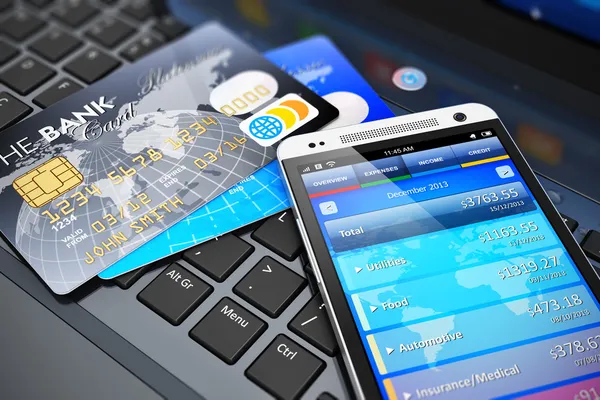Table of Contents
In an era defined by digital transformation, the way we manage our finances has undergone a significant evolution. Among the key drivers of this change is the rise of mobile banking – a phenomenon that has revolutionized the financial services landscape. In this article, we embark on a comprehensive journey through the realm of mobile banking, exploring its origins, growth, impact, challenges, and future prospects.
The roots of mobile banking can be traced back to the late 1990s and early 2000s when banks first began experimenting with SMS-based services for basic account inquiries and alerts. However, it wasn’t until the mid-2000s, with the advent of smartphones and mobile internet connectivity, that mobile banking truly began to take off.
The launch of the iPhone in 2007 marked a turning point, ushering in a new era of mobile computing and paving the way for the development of dedicated mobile banking apps. Banks around the world quickly embraced this new technology, rolling out mobile apps that offered customers a range of features, including account management, bill payment, fund transfers, and mobile deposits.
Over the years, mobile banking apps have evolved significantly, incorporating advanced security features, biometric authentication, and personalized experiences tailored to individual user preferences. Today, mobile banking has become an indispensable tool for millions of consumers worldwide, offering unparalleled convenience and accessibility.
Impact of Mobile Banking
The impact of mobile banking on consumers and financial institutions cannot be overstated. For consumers, mobile banking has transformed the way they manage their finances, offering unprecedented convenience and flexibility. With mobile banking apps, customers can check their account balances, pay bills, transfer funds, deposit checks, and even apply for loans – all from the palm of their hand.
Moreover, mobile banking has democratized access to financial services, making banking more inclusive and accessible to underserved communities. In many developing countries, where traditional banking infrastructure is limited, mobile banking has emerged as a lifeline, providing millions of people with access to essential financial services such as savings accounts, loans, and insurance.
For financial institutions, mobile banking represents both a challenge and an opportunity. On one hand, the shift to digital channels has forced banks to adapt their business models and invest in technology to remain competitive in the digital age. Banks that fail to embrace mobile banking risk losing customers to more agile and tech-savvy competitors.
On the other hand, mobile banking offers banks the opportunity to deepen customer relationships, drive engagement, and reduce operational costs. By offering a seamless and convenient mobile banking experience, banks can strengthen customer loyalty and increase customer satisfaction, leading to higher retention rates and lifetime customer value.
Challenges and Considerations
While mobile banking offers numerous benefits, it also presents a range of challenges and considerations for both consumers and financial institutions. Security remains a top concern, with cyberattacks and data breaches posing a constant threat to mobile banking users. Banks must invest in robust security measures, such as encryption, multi-factor authentication, and biometric identification, to protect customer data and prevent unauthorized access.
Moreover, as mobile banking continues to evolve, banks must ensure that their mobile apps remain user-friendly, accessible, and compliant with regulatory requirements. Accessibility is particularly important for older adults and individuals with disabilities, who may face barriers to using mobile banking apps due to small font sizes, complex navigation, or lack of assistive technologies.
Another challenge is the digital divide, which refers to the gap between those who have access to digital technologies and those who do not. In many parts of the world, especially in rural and low-income areas, access to smartphones and reliable internet connectivity remains limited, hindering the adoption of mobile banking services.
Future Trends and Innovations
Looking ahead, the future of mobile banking is filled with exciting possibilities, fueled by ongoing technological advancements and changing consumer preferences. Several key trends are likely to shape the future of mobile banking, including:
Biometric Authentication: The widespread adoption of biometric authentication technologies such as fingerprint scanning, facial recognition, and iris scanning will enhance the security of mobile banking apps and streamline the authentication process for users.
Open Banking: The emergence of open banking APIs (Application Programming Interfaces) will enable banks to collaborate with third-party developers to create innovative new financial products and services, offering customers greater choice and flexibility.
Artificial Intelligence: AI-powered chatbots and virtual assistants will become increasingly prevalent in mobile banking apps, providing customers with personalized recommendations, proactive support, and automated assistance.
Blockchain and Cryptocurrency: Blockchain technology and cryptocurrencies will play an increasingly important role in mobile banking, enabling faster, more secure, and more transparent transactions across borders.
IoT Integration: The integration of Internet of Things (IoT) devices with mobile banking apps will enable users to monitor and manage their finances in real-time, from connected cars and appliances to wearable devices and smart home systems.
Conclusion
In conclusion, mobile banking has emerged as a transformative force in the financial services industry, offering consumers unprecedented convenience, accessibility, and control over their finances. From its humble beginnings as a basic text-based service to its current status as a sophisticated and indispensable tool, mobile banking has come a long way in a relatively short time.
As technology continues to advance and consumer expectations evolve, the future of mobile banking holds immense promise. By embracing emerging technologies, addressing security concerns, and ensuring inclusivity and accessibility for all users, mobile banking has the potential to revolutionize the way we think about and interact with money in the years to come.
Sources
McKinsey & Company. “Digital Banking: The $1 Trillion Opportunity.” Accessed January 10, 2023. Link
Deloitte. “The Future of Digital Banking: A New Digital Ecosystem.” Accessed January 10, 2023. Link
PwC. “Mobile Banking: The Next Frontier of Financial Services.” Accessed January 10, 2023. Link
